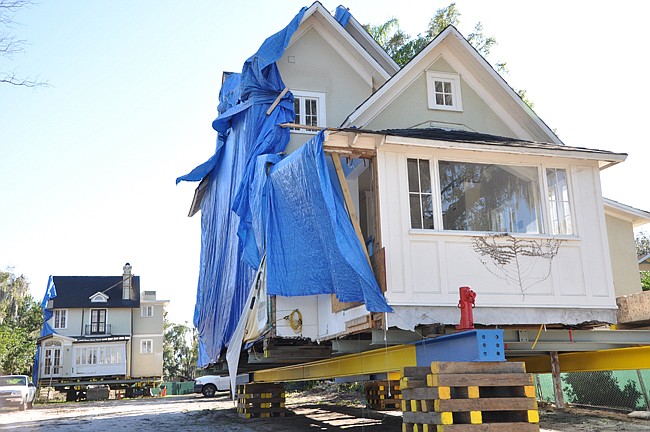- April 25, 2024
-
-
Loading

Loading

Historic preservation in Winter Park tasted a small victory Monday as City Commissioners voted to waive over $9,000 in utility installment costs for the relocation of the Winter Park Wedding Chapel, and to help out the Capen House move on the same night.
The city’s involvement will help save two historic buildings, after the city allowed an average of five potential candidates for the National Registry of Historic Places to be bulldozed every year for the last dozen years.
The sewer and electric for the Chapel will bring it one step closer to new life as it takes root at its new home at the corner of New York and Lyman avenues.
Movers picked up the chapel and placed it on its new foundation last December due to an incoming land development on its original location on New England Avenue.
“I think this is absolutely going in the right direction,” Commissioner Carolyn Cooper said. “I feel very good that we are incentivizing the reuse of historic facilities.”
Project general contractor Dan Bellows requested financial aid from the City Commission at its Feb. 24 meeting in support of Traditional Neighborhoods Inc., the nonprofit behind the chapel’s relocation.
“I think the city’s going to be pleased with the end result,” Bellows said during the meeting.
“I would like to ask on behalf of the non-for-profit if the city could contribute.”
The City Commission voted to pick up the tab on a crucial portion of another historic building’s project earlier that same meeting. A sewer line beneath the future site of the 128-year-old Capen House on the grounds of the Albin Polasek Museum and Sculpture Garden slowed the blistering pace of the relocation effort.
Polasek Museum Executive Director Debbie Komanski received estimates ranging from $12,000 to $50,000 to redirect the pipe, leading her to ask City Manager Randy Knight if the city could provide the service for a cheaper cost and be reimbursed.
Winter Park officials did even better, agreeing to move the pipe at no cost to the Museum.
“We can’t go on like this willy-nilly, but I think it is a direction to the Historic Preservation Board to look at what we’ve been willing to support,” Commissioner Steven Leary said.
But the city’s decision to lend financial support may have come too little, too late for a number of other historic buildings in Winter Park. The Annie Russell House on Via Tuscany, the Schultz Home on New England Avenue and the Chase-Schenck Home on Palmer Avenue are among the many old homes lost to the wrecking ball over the years.
GAI Consultants, Inc. surveyed 650 ‘historic resources’ in Winter Park in 2001, measuring their potential for the National Register of Historic Places. In the 12 years that followed, 60 of them have been demolished, according to research conducted by the Friends of Casa Feliz in October 2013.
“We’ve lost a lot of precious historic resources over the years because nobody has intervened to save them,” Friends of Casa Feliz Executive Director Betsy Owens said. “They just let the free market do its thing.”
Owens said that in her nine years of involvement with historic preservation, the city hasn’t supported any historical assets financially until now.
“If our motto is the ‘the city of culture and heritage,’ it’s important for us to put our money where our mouth is and spend appropriate resources to support culture and heritage in the city,” Owens said.
The change of pace for the city will help to save two buildings with a combined age of 207 years. Built in 1935, the old chapel originally housed a black Methodist church as early as 1943. The congregation resided inside the chapel up until the 1990s, when it outgrew the building and moved elsewhere.
Winter Park should continue incentivizing historic preservation with such buildings, but should be wary of what changes and renovations might damage a building’s historic character, Cooper said.
“If we’re going to be investing our funds, what a tragedy it would be if there were so many changes made to the structure that it no longer qualified as a historic asset,” Cooper said. “My concern is not that it’s going to be designated, it’s at what point do the changes for these facilities have to go before a historic preservation board.”
Cooper said the city will look at placing the wedding chapel on the Winter Park Historic Register once construction is finished.